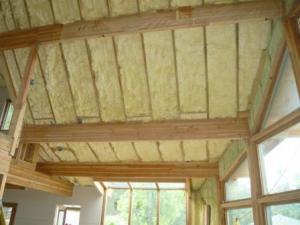It is never a good idea to install a roof over wet plywood or any type of roof sheathing.
Underside of roof sheathing is wet.
This can be caused by the action of fungal growth and molds and the affect they have on the tannins in the wood.
Mold growth provided it is not just cosmetic mold which can simply be left alone can be cleaned from wood surfaces by blasting scrubbing or even simple surface wiping depending on the surface accessibility and.
In the vast majority of cases the mold growth is caused by condensation.
Generally tearing off a roof and roof sheathing and perhaps roof framing to remove mold would not be sensible nor cost justified.
Mold growing on the sheathing in your attic is a serious problem that shouldn t be ignored.
Mold on attic sheathing.
There were also several issues with the intersection of the roofs where the 2 apartments meet.
Trapped water will boil when the sun heats the roof and the shingles will then have small pits where.
When this phenomenon occurs the sheathing or framing may become slightly wet on the surface.
This occurs when the temperature of the sheathing drops below the dew point creating a thin layer of moisture on the substrate.
Does mold on attic sheathing have to be removed.
The following picture is of a long standing moisture condition in an attic where much of the roof sheathing has turned black.
The osb and in fact any wood panels must be allowed to dry completely depending on how wet the panels are this could be a few days before any roofing material is applied to avoid trapping moisture under the roof material that could cause edge swell and buckling.
Installation tips osb roof sheathing the ol sage builder trubord.
When moisture condenses on plywood roof sheathing repeatedly or continuously the wood will turn black.
Mold growth on attic roof sheathing is a common issue in cool climates such as the pacific northwest.
Those often are the underside of the roof.
The sheathing at the peak of the roof was saturated with moisture.
On going back inside the attic the frost had melted and the underside of the sheathing was wet not so much that it was dripping but enough that it was damp.

